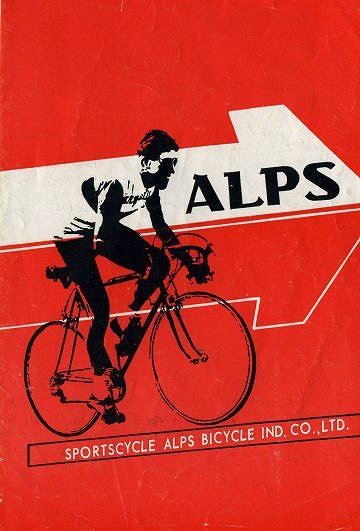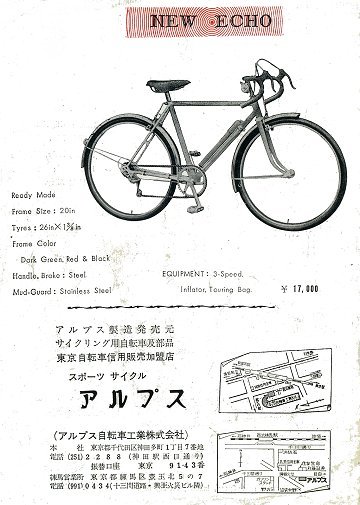|
The company was established in 1918 and its special field was touring bicycle.
Sport cycle Alps (Alps bicycle industry) which left the big footprint to the cycling community in Japan closed the shop in the January 28, 2007; many fans were sorry for it.
This time I show the catalog of Alps in 1964.
It was issued before the catalog of Part 12. I don't know the reason why it was written in English.
There were five models such as World-ace, Clubman-ace, Pioneer, Green-cap, and New-echo in the catalog.
All of the models were English Clubman style. All of the models weren't equipped with carrier.
Therefore we had to put small articles for trip in a saddle bag (it was called "touring bag" in those days).
The chain-wheel was a single model, and the rear was four speeds.
The rear derailleur was so-called bamboo sprout style.
It must have been a product of Sankosya or Maeda (Suntour).
By the way, I had read a travelogue of the member of NCTC (Japan cyclists touring club) which has very long history as hobby cycling club; and had known that there were lots of cyclist who owned Alps bicycle.
It means that Alps is a necessary brand when we talk about a bicycle touring history of Japan.
As you can see in the lineup, it was obviously a pioneer of Japanese sports bicycle.
The catalog was offered by Mr. Old cyclist.
|



